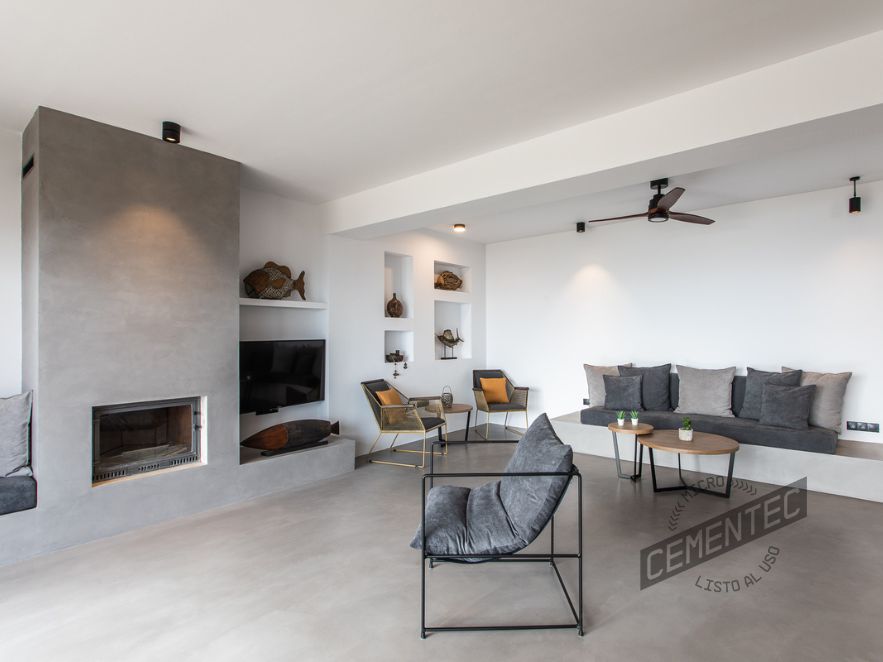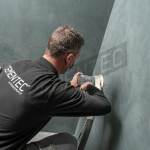With the cold weather, our fireplaces are once again the centre of attention at home. In fact, it is logical that we want to give them a new look without losing their warmth. In this context, chimney lining with microcement becomes a fascinating alternative to give a new face to this space of comfort and family gathering.
The microcement in fireplace its versatile in terms of design. From minimalist and modern styles that add a certain touch of elegance, to more rustic options that capture the beauty of natural stone. Ready-to-use microcement allows you to customize your fireplace according to your preferences. In addition, its resistance, durability and ease of maintenance make it a sensible and stylish choice.
So, whether your goal is to modernize, cover or coat an existing fireplace or even if you plan to create a completely new one from scratch, microcement gives you the opportunity to turn your home into an even more special and welcoming space. In this Cementec article, we will take you through its many advantages and offer you creative ideas so you can make informed decisions and enhance the beauty of your salon. Read on to find out how to achieve this!
How many types of chimneys are there?
To begin with, it is essential to identify the type of chimney we have at home to determine if it is suitable for microcement lining. The types of fireplaces vary considerably depending on their design, the fuel they use and their functionality.
Below, we will provide you with a brief description of the most common types:
- Wood-burning chimneys: these are the classic fireplaces that work with wooden logs. They are known for their rustic charm, the authenticity of the flame and the crackling of the wood. They are ideal for those looking for a traditional and cozy experience.
- Gas chimneys: use natural gas or propane as a heat source. They are easy to turn on and off, making them convenient. In addition, they are usually more efficient in terms of heat emission and cleaning compared to wood-burning fireplaces.
- Electric chimneys: these fireplaces do not require a traditional fireplace or flue. They run on electricity and offer simulated flames that provide a cozy atmosphere. They are an excellent option for smaller spaces or where it is not possible to install a conventional fireplace.
- Bioethanol chimneys: they use bioethanol as fuel and do not require a smoke outlet. They are ecological and do not emit smoke or ashes. They are a contemporary and stylish option for those looking for a modern design and a fuss-free fireplace.
- Pellet chimneys: they run on compressed wood pellets. They are an efficient and ecological alternative to wood-burning fireplaces, as they produce less ash and emit less smoke. They are programmable and provide constant heat.
The choice of fireplace type will depend on your personal preferences, space availability and heating needs. Each type has its own advantages and considerations, so it is important to evaluate which one best suits your lifestyle and home.
Tomás Amat, architect, creative and manager of Cementec
chimneys Lining with microcement, which are the most appropriate?
If you are thinking of applying microcement as a final coating of your fireplace, it is important to know which fireplaces are appropriated to this use. Each fireplace has its own design and uses a different combustible material type, which affects directly to the election of the appropriate coating. In this point, we will explore in detail how this choice can transform and modernize your fireplace design. Let’s see below:
| Types of chimneys | Chimneys coating |
| Chimneys | Only the front of the chimney and the areas surrounding the chimney opening can be coated with microcement, although it is not applied directly to surfaces that come into direct contact with flames or extreme heat. |
| Gas chimneys | In the surrounding areas of the opening to improve aesthetics, safety and ease of maintenance. The parts of the gas fireplace that are in direct contact with the fire and flames are usually constructed of refractory materials specifically designed to withstand high temperatures without being damaged. |
| Electric chimney | It concentrates on the areas around the opening to improve safety, aesthetics and ease of cleaning. The parts of the electric fireplace that are in direct contact with the electrical components and the display system are usually constructed of insulating materials and do not require additional coating. |
| bioethanol chimney | Microcement lining typically extends beyond the immediate area of the opening, over a larger area than wood, gas, or electric fireplaces, allowing for a custom design and modern appearance. |
| pellet chimney | As with other types of fireplaces, microcement lining on pellet fireplaces is not applied directly to areas that come into direct contact with flames or extreme heat. These areas are typically constructed of refractory materials specifically designed to withstand high temperatures without damage. |
In summary, microcement lining in fireplaces is a versatile option that can be applied in any of the available options, whether wood-burning, gas, electric, bioethanol or pellet. However, we highly recommend that its installation is made by experienced professional on microcement applications to guarantee optimal results to practical fireplaces.
Ready-to-use microcement chimney designs
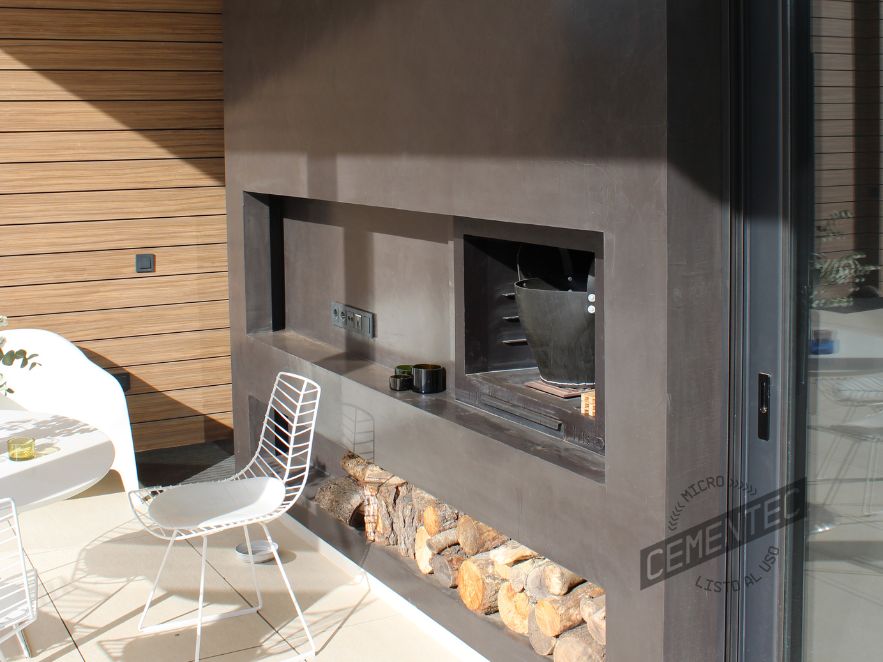
Following this premise, opting for chimney lining with microcement becomes an exciting opportunity to infuse a unique and personalized touch into your living room. The possibilities are truly limitless, whether you want to completely transform the look of your fireplace or simply add a touch of elegance. Below, we provide you with the inspiration you need to turn your fireplace into an essential centrepiece in your living room.
Original ideas to coat a chimney
Check on the following ideas that we already include in our microcement chimney projects:
- Industrial style: if you are attracted to the industrial look, consider a microcement coating in gray or metallic tones. You can combine it with steel or black iron details to achieve a contemporary and urban design.
- Classic elegance: for a touch of classic elegance, opt for a microcement coating in neutral tones such as white or light gray. Add decorative molding around the opening for a timeless look.
- Modern minimalism: microcement in solid colors and smooth surfaces is ideal for a minimalist and contemporary design. Eliminate unnecessary details and opt for clean, simple lines.
- Game of textures: experiment with textures in the microcement. You can achieve a rough or textured look that adds visual depth and tactile appeal to the fireplace.
- Rustic and natural: combine microcement with natural elements such as wood or stone for a balanced and harmonious effect. This can soften the overall look and create a cozy feel.
- Integrated Lighting: adding recessed or LED lighting into the microcement liner can create a warm atmosphere and highlight the fireplace
- Geometric Patterns: play with geometric patterns, such as hexagons or herringbones, in the microcement coating for a contemporary and attractive design.
Advantages of microcement as a chimney lining
Thus, chimney lining with microcement offer a series of advantages that make them an attractive choice to transform and improve the appearance of your fireplace. Here we present some of them:
- Versatility: microcement can adapt to a wide variety of styles, from minimalist and modern to rustic and traditional. This allows you to customize the appearance of your fireplace based on your preferences and the aesthetics of your home.
- Heat resistance: this liner is heat resistant, making it suitable for use on fireplaces. It can withstand high temperatures without deformation or damage, ensuring safety and durability.
- Durability: microcement, under proper care, is a durable material that can resist daily wear and tear. Which means your fireplace will maintain its elegant appearance for a long time.
- Jointless – applied continuously, meaning there are no visible joints or cracks. This creates a uniform and elegant appearance on the fireplace.
- Quick dry: dries quickly, speeding up the installation process and minimizing renovation disruptions to your home.
- Quality-price: although the initial cost can be high compared to other materials, microcement offers excellent value for money due to its durability and ease of long-term maintenance.
What is the best floor around a chimney?
The best flooring around a fireplace should be resistant to heat and high temperatures. Natural stone is a classic choice for its durability and rustic style, providing elegance and resistance. However, Cementec ready-to-use microcement is an excellent modern alternative: it offers high heat resistance, is easy to apply, does not require construction work, and its seamless finish is ideal for rooms with a contemporary design.
How to line or cover ready-to-use microcement chimneys
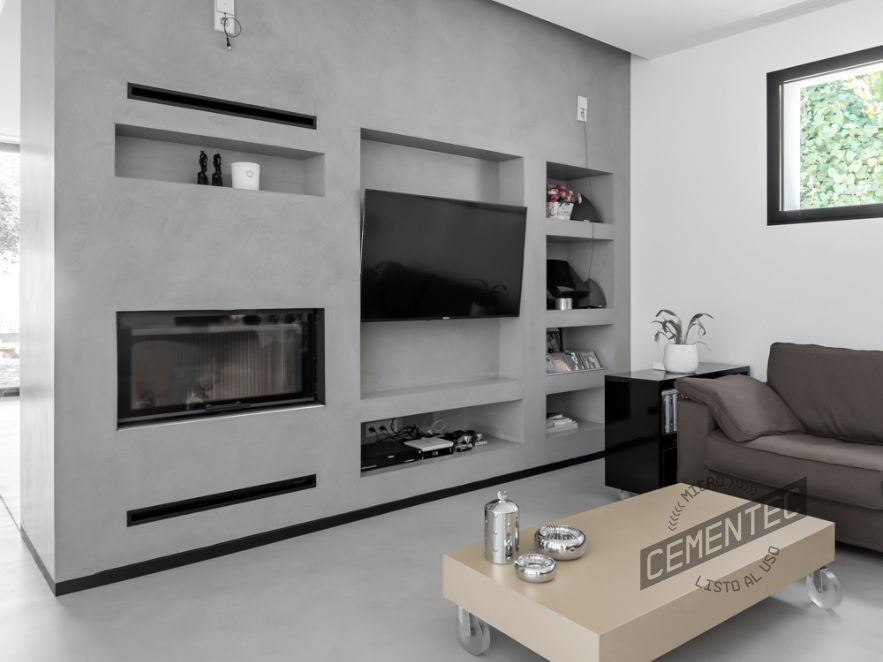
And now that you have probably decided, how can you line your fireplace with microcement? The process of applying microcement in chimneys is a task that requires certain steps and considerations to achieve optimal results.
Immediately, we will briefly tell you how to cover microcement chimneys decisively, knowing that it is best to have a specialized professional:
- Surface preparation: before applying the microcement, it is essential to prepare the surface of the fireplace. It must be clean, dry and free of dust and grease. If the current surface is uneven, it is recommended to level it with a suitable mortar.
- Specifications according to type of chimney: it is important to respect the distances recommended by the microcement manufacturer and the safety regulations taking into account the type of chimney as we have previously mentioned.
- Primer: apply a primer or adhesion promoter to the surface of the fireplace. This will help the microcement to adhere properly and ensure better durability.
- Base coat application: apply the microcement base coats to the prepared surface. This layer is essential to achieve a solid adhesion. Spread the microcement evenly using a steel trowel and let it dry according to the manufacturer’s instructions.
- Microcement layer: apply microcement layers of desired colour over the dry base layer. Use a steel trowel or putty knife to create the desired finish. You can opt for a smooth, contemporary finish or a textured one for a more rustic look.
- Sealing: once the microcement layer is dry, it is recommended to apply Finish Forte sealant. This will protect the chimney liner and make it easier to clean and maintain.
Maintenance and care of microcement chimneys
Finally, the maintenance and care of chimneys Lining with microcement is essential to ensure their durability and maintain their aesthetic appeal. Here I provide you with detailed information on how to maintain and care for these microcement fireplaces:
- Regular cleaning: regular cleaning is essential to maintain the appearance of your microcement fireplace. Use a soft cloth or nonabrasive sponge moistened with water and a mild detergent to remove dust and dirt. Avoid using harsh chemicals that could damage the surface.
- Periodic sealing: you may need to reseal the chimney from time to time. This will protect the microcement and make cleaning easier. Follow the sealant manufacturer’s recommendations regarding frequency of reapplication.
- Avoid sharp objects: avoid contact with sharp or sharp objects that could scratch the microcement surface. Always place decorative elements carefully and avoid dragging furniture or heavy objects over the fireplace.
- Protect from liquids: be careful with spilled liquids. Wipe up any spills immediately to prevent them from penetrating the microcement and causing stains. Use coasters or tablecloths to protect the fireplace surface from liquids and excessive heat.
- Winter protection: during the winter months, when the fireplace is in use, keep in mind that high temperatures near the opening can affect the sealant and microcement surface. Maintain a safe distance between the flames and the microcement coating.
With proper care, your microcement lined fireplace will continue to be the centre of attention in your living room.
Want to know more about how to care for and clean microcement? Check out our previous blog post where you will find useful tips to maintain its beauty and durability.
Tomás Amat, architect, creative and manager of Cementec
Conclusions
In conclusion, chimney lining with microcement offers an exceptional opportunity to add elegance and warmth to your home. The wide range of design options, practical advantages and ease of maintenance make microcement the ideal choice.
If you are thinking about transforming your existing fireplace or creating a new one with microcement, we strongly recommend seeking advice from experts in the field, such as the Cementec technical team. With their experience and knowledge, they will be able to help you bring your vision to life and create a microcement fireplace that becomes the centre of attention.
Did you find this article about microcement in chimneys interesting? Share your opinions on our social networks and send us your recommendations or results after application.
